
Farmers pick ripe grapes in the area. [Photo provided to China Daily]
In the desert of Helan Mountain, where Northwest China's Inner Mongolia and Ningxia Hui autonomous regions meet, a group of people have striven for decades to create a miracle, turning the area into an oasis.
The eastern foothills of Helan Mountain, thanks to its unique geographical conditions, act as a natural shield against the harsh northwest winds and cold air. The climate in this area is characterized by low rainfall, dryness, abundant sunlight and heat, a significant difference in temperature between day and night, and well-ventilated sandy soil. These factors make it an ideal place for grape cultivation.
The story dates back to the 1990s when Xie Xingchang, the former Party secretary of Funing village in Minning town in Ningxia, remembered arriving in the area, where he could only see an endless expanse of desert. He recalled how sandstorms could blow away the temporary tents they set up at the time.
Chen Deqi, a Fujian businessman, purchased 6,666 hectares of barren land under the eastern foothills of Helan Mountain in 2007. When he arrived in Ningxia with the ambition of planting a large vineyard, he found that the sandstorms were so severe that they could even blow off the roofs of steel houses.
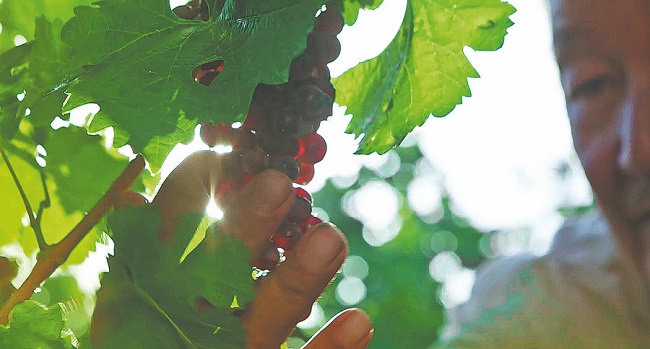
The sunshine in the area is very suitable for the growing of grapes. [Photo provided to China Daily]
Despite the unexpectedly harsh conditions, they persevered and undertook afforestation and land cultivation. Year after year, they improved the soil and environment, and eventually introduced and tested grape varieties suitable for the region.
In 2013, Chen set up the Ho-lan Soul Chateau, which has an annual production capacity of 5,000 metric tons.
Thanks to decades of efforts of thousands of workers like Chen, the grape planting area in the region has reached 35,000 hectares. It accounts for one-third of the country's total and is the largest concentrated area for wine grape production in China.
There are currently more than 200 wineries in the region producing 130 million bottles of wine annually. This has provided 130,000 jobs for local residents in total and generates an output value of 30 billion yuan ($4.32 billion) per year.
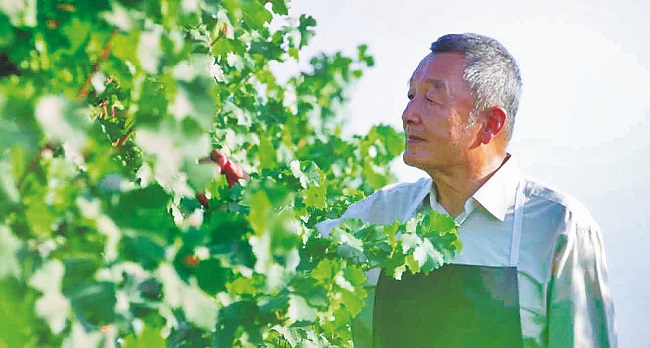
A planting expert checks grapes on the field. [Photo provided to China Daily]
Recognition
Nowadays, Ningxia's wine, a rising star in the world's wine family, has won more than 1,000 prizes in international competitions. It includes gold medals at the Decanter World Wine Awards, the world's largest wine competition.
In 2021, Ningxia was awarded the title of "Global Wine Tourism Destination" by the Global Wine Tourism Organization.
This recognition has put Ningxia on the world map as an emerging wine region, and has helped to promote the region's wines and tourism offerings to the world. The recognition from GWTO has cemented Ningxia's reputation as a must-visit destination for wine lovers and travelers seeking unique and unforgettable experiences.
In 2013, the high-quality grape production area in the eastern foothills of Helan Mountain was included in the "World Wine Map". As a result, Ningxia was selected as one of the 46 best travel destinations in the world in 2013 by The New York Times, and was hailed as "the place where China's best wine can be brewed".
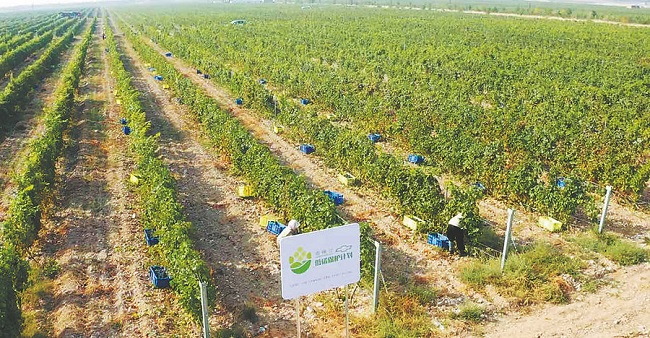
The He Lan Hong Winery where Chevrolet adopted 6.7 hectares of grapevine in October. [Photo provided to China Daily]
"Growing wine grapes in a desert isn't normally a formula for oenological excellence, but in the arid mountainous region of Ningxia, some 885 kilometers west of Beijing, the local government has reclaimed desert-like expanses, irrigated them profusely, planted them with cabernet sauvignon and merlot and started a campaign to transform this rugged backwater into China's answer to Bordeaux," it said.
By 2035, this area is expected to have 100,000 hectares of vineyards with an annual production capacity of more than 600 million bottles of wine, a scale similar to that of Bordeaux in France, according to officials of the Administrative Committee of the Grape Industry Zone of the Helan Mountain Eastern Foothills, one of China's first government bodies to manage and propel development of the industry.
The wines are also making their way to the international stage. The export value in 2022 surged by more than 170 percent year-on-year to a record 5.8 million yuan.
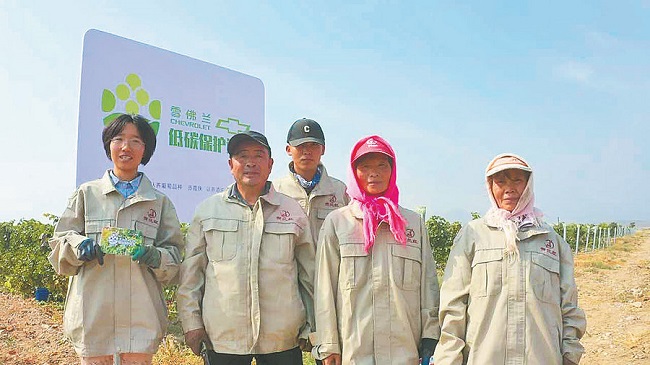
Planting experts work on the desert of Helan Mountain to turn the area into an oasis. [Photo provided to China Daily]
Green barrier
The grape industry in the eastern foothills of Helan Mountain provides not only outstanding social benefits but plays a crucial role in regulating the natural environment.
It serves as an important oxygen bar for Ningxia while acting as a windbreak and ensures sand fixation, water conservation, carbon sinking and flood interception.
According to Du Lingtong, a researcher at the School of Ecology and Environment of Ningxia University, grape leaves absorb carbon dioxide during photosynthesis, and through the grape vine and root system, carbon is transferred to the soil.
About 30 percent of the fixed carbon is stored in the plant during this process, while a significant amount of carbon is fixed in the soil, forming a large carbon pool. As a result, the grapevine ecosystem is highly favorable for carbon sinking.

Volunteers play games with the children during the program. [Photo provided to China Daily]
Carbon Road Plan
In 2022, China Daily launched the Carbon Road Action Plan, which cooperates with the Administrative Committee of the Grape Industry Zone of the Helan Mountain Eastern Foothills to encourage companies and individuals to adopt vineyards, which will be managed by local planting experts.
SAIC GM Chevrolet took the lead and adopted a 6.7-hectare grapevine of the He Lan Hong Winery in October.
The vineyard is expected to help to absorb 60 tons of carbon dioxide annually through the process of photosynthesis, setting an example for other companies to follow in their low-carbon transformation efforts.
Zhou Peng, director of the business division at SAIC GM Chevrolet, said: "Chevrolet places great emphasis on environmental protection and fully supports China's aim of reaching its peak carbon emissions by 2030 and achieving carbon neutrality by 2060.
"We are constantly exploring and promoting sustainable development and eagerly anticipate the participation of more companies and individuals in environmental protection to make their contribution to this cause," Zhou said.

Chevrolet launches the Yangtze Finless Porpoise Conservation Program with nature conservation organizations in 2022. [Photo provided to China Daily]
CSR efforts
Chevrolet has been focusing on sustainable development and social responsibility in recent years. The brand has created three major projects to promote public welfare.
The first project is the Chevrolet Red Chalk Program, which has been committed to improving the development of quality education in remote areas for 17 years. Since its launch in 2006, the program has organized more than 1,200 volunteers to visit 137 schools in 29 cities, bringing quality education courses to more than 39,000 rural children.
Earlier this year, Chevrolet Red Chalk Program partnered with "I Wonder Why", the first original science popularization brand in China, to donate a library to Bizhou Primary School in Zhejiang province, creating a comfortable and bright reading space for children. The library features nearly 1,000 science books donated by Chevrolet Red Chalk and "I Wonder Why".
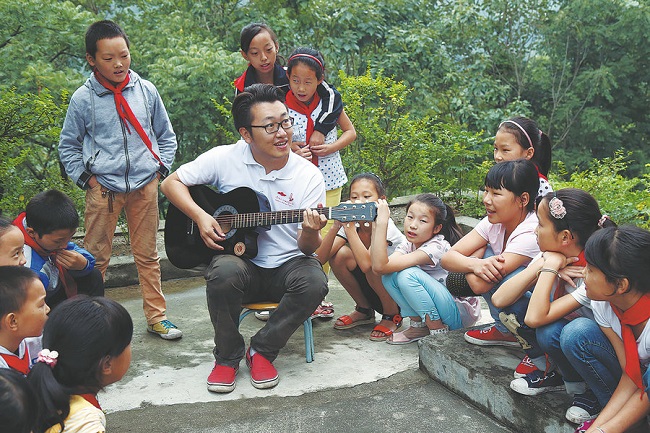
Students sing with a volunteer of the Chevrolet Red Chalk Program. [Photo provided to China Daily]
Besides, Chevrolet launched the Yangtze Finless Porpoise Conservation Program in partnership with nature conservation organizations the World Wildlife Fund and the One Planet Foundation in 2022.
The program aims to protect the endangered species and build a beautiful planet by jointly building a Yangtze River Finless Porpoises Science Museum and publishing science education textbooks.
Zhou said Chevrolet has always been committed to supporting sustainable development, promoting rural education and aiding species conservation. Through building innovative and diverse cultural platforms, Chevrolet has been conveying its brand philosophy of "love, dreams, action and sharing" to the public.
In the future, Chevrolet will continue to move forward with enthusiasm and faith, working together with all sectors of society to strive for a more harmonious future between humans and nature, Zhou added.